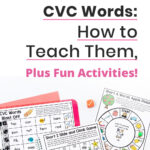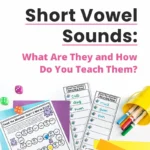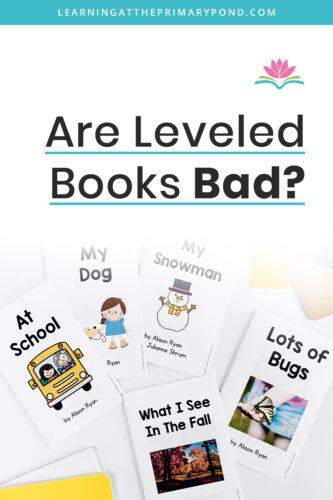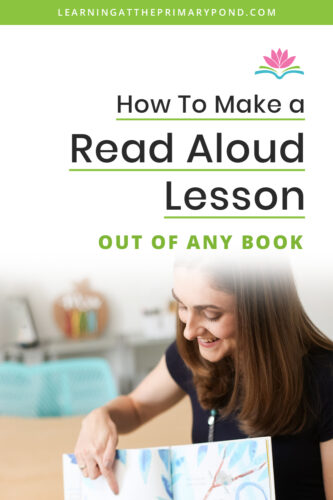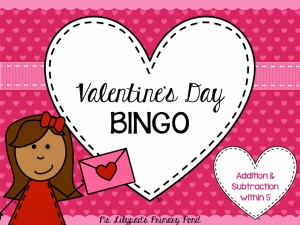Not sure what a consonant blend is? Need some lesson ideas for teaching blends to your students? You’re in the right place! Consonant blends appear in many different words, and it’s important to not only expose students to different blends, but also to teach them how to blend.
Consonant blends can be difficult for students to master, and even more difficult for teachers to think of engaging ways to teach them, but this blog post will make all that easier!
In this post, I’m going to explain blends, give some examples, and share how I teach blends to my Kindergarten, first grade, or second grade students!
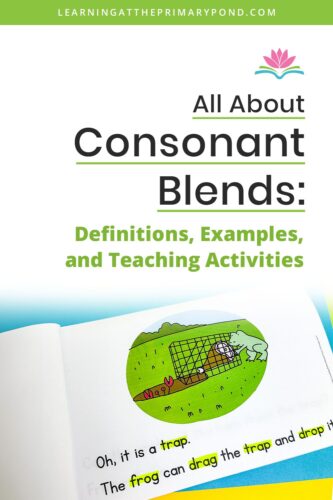
What is a Consonant Blend?
A blend is a written sequence of consonant letters that comes before or after a vowel in a word or syllable. Blends are also sometimes called consonant clusters. They can be made up of 2 or 3 letters.
You’ll see blends at the beginning of a word and syllables (for example: “gl” in glad or “scr” in scrap) and at the end of a word or syllables (“nt” in the word tent).
In a blend, each letter retains its own sound. For example, in the word slid, you can still hear the individual consonant sounds of /s/ and /l/ in the “sl” blend.
This is different from a digraph (like ch or sh). In a digraph, the letters work together to make a single sound. In a blend, this is not the case.
Did you know there are different types of consonant blends?
- Three-letter blends occur at the beginning of words or syllables. Some three-letter consonant blend examples are “scr” (as in scrap), “str” (as in stream), “spr” (as in sprout), and “spl” (as in split). With these examples, each of the three letters retains its individual sound.
- A digraph-blend is a type of three-letter blend that includes a digraph plus an additional consonant. Examples of this would be “thr” (as in throb) and “shr” (as in shrimp). A digraph-blend can be seen at the end of words with “nch” (as in munch).
How to Teach Consonant Blends
Before we talk about the “how,” let’s talk about which initial blends and final blends are the common blends that you should teach.
Well, there’s a ton of blends out there! Here are some l blends that are found at the beginnings of a word or syllable:
- bl
- cl
- fl
- gl
- pl
Here are some example words with l blends (I limited these to short vowel words since I usually teach blends after or in conjunction with short vowels based on the order of phonics skills): blog, blip, bled, clap, clam, clip, clop, club, flag, flat, fled, flip, flop, glad, glob, plan, plop, plum
Then there are r blends (also found at the beginning of a word or syllable):
- br
- cr
- dr
- fr
- gr
- pr
- tr
R blends can be tricky. When we’re working on “dr” and “tr,” I don’t expect 100% mastery from my Kindergarten or first grade students. The “dr” and “tr” blends can sound like /j/ and /ch/ to kids, and we need to teach them that what they hear is different from how the blend is spelled.
Here are some example words with r blends: brag, bran, brim, crab, cram, crib, drag, drip, drop, drum, Fred, from (note the unique vowel sound), frog, grab, gram, grip, grid, prim, prod, prop, trap, trip, trim.
There are s blends (some are found at the beginning of a word or syllable, some at the end, and some are three-letter consonant blends that appear at the beginning of a word or syllable):
- sc
- sk
- sl
- sw
- st
- sp
- scr
- spl
- spr
- str
- squ
Here are some words you might use to teach blends with s: scan, scum, skim, skid, skip, ask, mask, task, husk, tusk, slap, slam, sled, slim, slip, slop, swim, swam, stem, step, stop, stun, last, best, list, fist, span, sped, spin, spot, spun, clasp, wisp, scrap, scrub, splat, splash, splint, sprint, spring, strap, strum, squid, squint
Then there are a handful of miscellaneous blends that are found at the ends of words, including:
- ct
- ft
- lf
- lk
- lp
- lt
- mp
- nd
- nt
- pt
- xt
Here are some example words with these ending blends: fact, duct, lift, left, soft, shelf, gulf, milk, silk, sulk, gulp, melt, belt, wilt, damp, camp, limp, stomp, jump, bump, and, sand, stand, lend, wind, fund, want, went, lent, mint, wept, swept, next
And last but not least, here are some digraph blends:
- shr
- thr
- nch
Here are some example words with digraph blends: shrub, shrug, throb, three, ranch, bench, winch, crunch, munch, lunch
There are a LOT of blends, right?
But here’s something really, really important: Kids do not need to memorize all these blends! They just need to know how to blend sounds together.
So when I’m teaching blends, I do point out patterns – i.e. that “st” is found in multiple words – but I keep the focus on helping students blend sounds together.
When Do You Teach Blends?
Students usually master blends after learning short vowels and digraphs. They are typically mastered before young readers learn long vowels.
Here’s how I cover blends in my phonics program, From Sounds to Spelling:
- Kindergarten: introduce initial s blends, initial l blends, initial r blends (end of the school year)
- 1st Grade: review initial s, l, r blends (only 2-letter blends, omit the 3-letter blends listed above), teach final blends, teach digraph blend -nch
- 2nd Grade: review initial and final blends, teach 3-letter blends, teach remaining digraph blends
The nice thing about teaching blends is that even when you’ve moved on to other spelling patterns (i.e. long vowel sounds) and more complex words, it’s pretty easy to have students keep practicing blends. For example, if you’re working on silent e, you can work on the words trade, drove, snake, etc.
What Are Some Activities for Teaching Blends?
Now that we’ve talked about what consonant blends are and how/when to teach them, let’s dive into some resource types!
Consonant Blends Blending Lines
These printables get kids to read individual words and complete sentences with words focused on consonant blends. Blending lines have been getting more attention with the recent discussions around the Science of Reading – and for good reason!
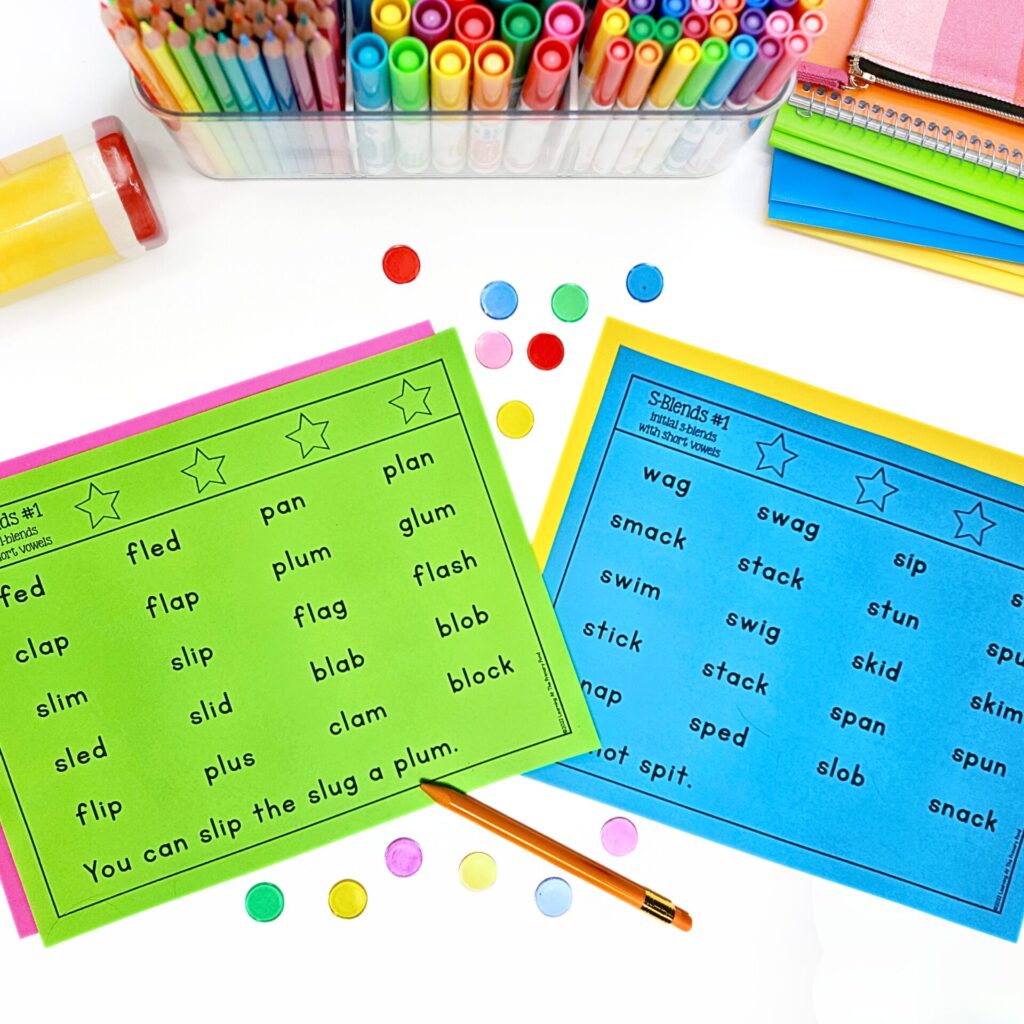
If you look “across” a line, you can see that, many times, just one part of the word changes. For example, “stun” becomes “spun.” This helps kids learn to notice small changes, even just one different sound, in words. When parts of the word stay the same, this builds early readers’ fluency and helps them learn to recognize that pattern more quickly in future words.
Take a look at my Consonant Blends blending lines here!
Consonant Blends Games
Phonics games are a great way to reinforce skills that students may have learned during whole group or small group instruction. It provides that extra independent practice that students need! With my No-Prep Phonics Games, there are options available for both initial consonant blends and final consonant blends.
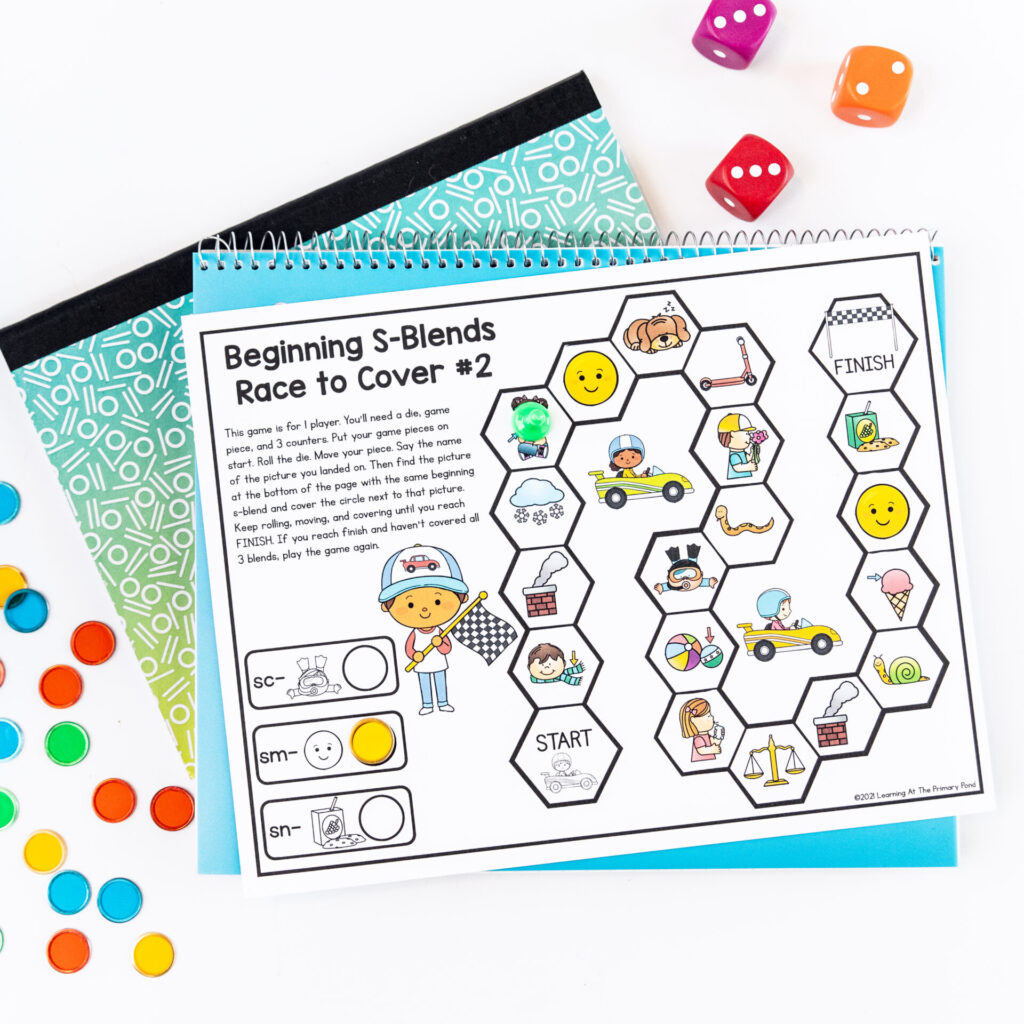
Consonant Blends Boom Cards
Want to add some digital fun? These Boom Cards are a great way for kids to practice because they’re self-correcting! With these digital versions, kids get immediate feedback in the moment, as they’re reading and spelling words with consonant blends. Boom Cards can save tons of prep time because the games are all ready to play, no prep required! Boom Cards are a great way to hold students accountable for their independent work activities.
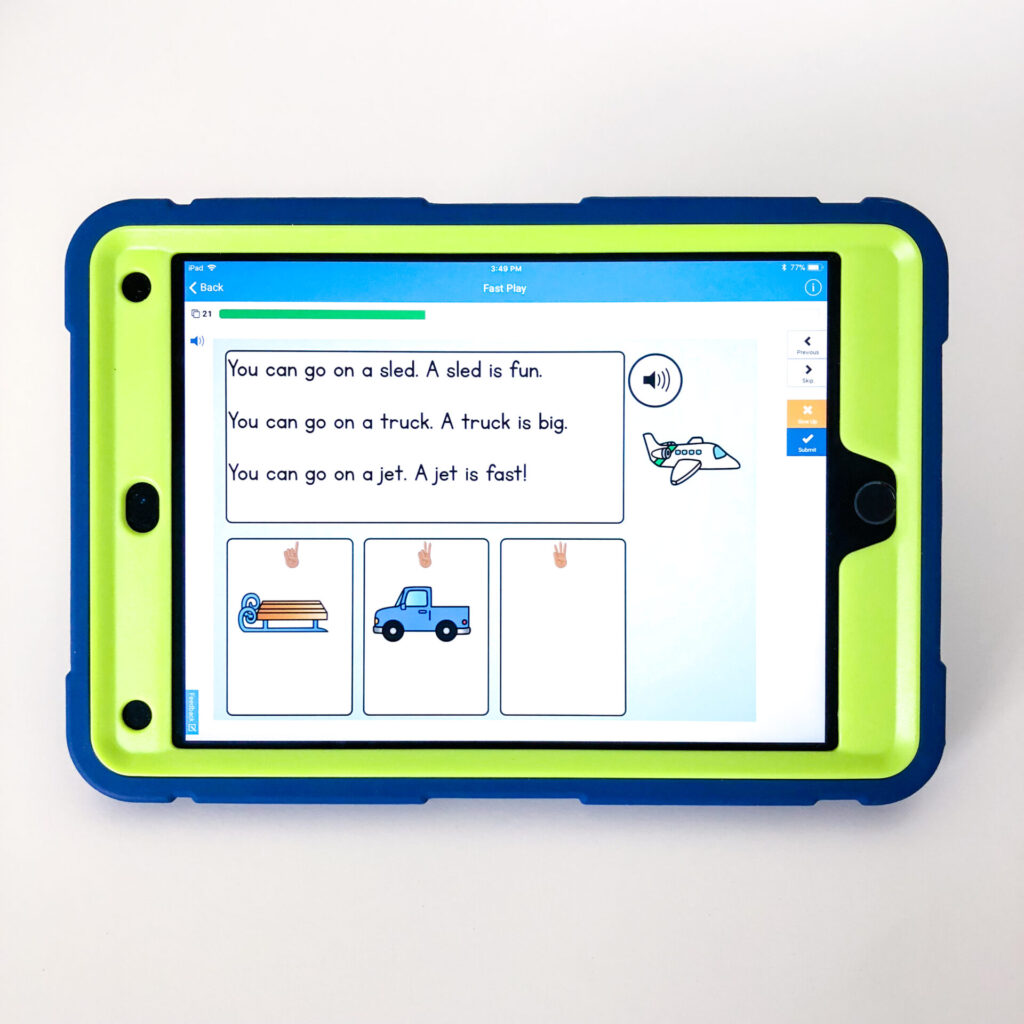
In the photo, you can see that some Boom cards also provide a way for students to see words with blends in the context of passages.
Check out my Consonant Blends phonics Boom cards here!
Consonant Blend Decodable Texts
Reading individual words is a great place to start, but kids also need to be reading words in context. These decodable texts are a printable resource and easy to use – and kids love them! They include words with blends AND basic high frequency words.
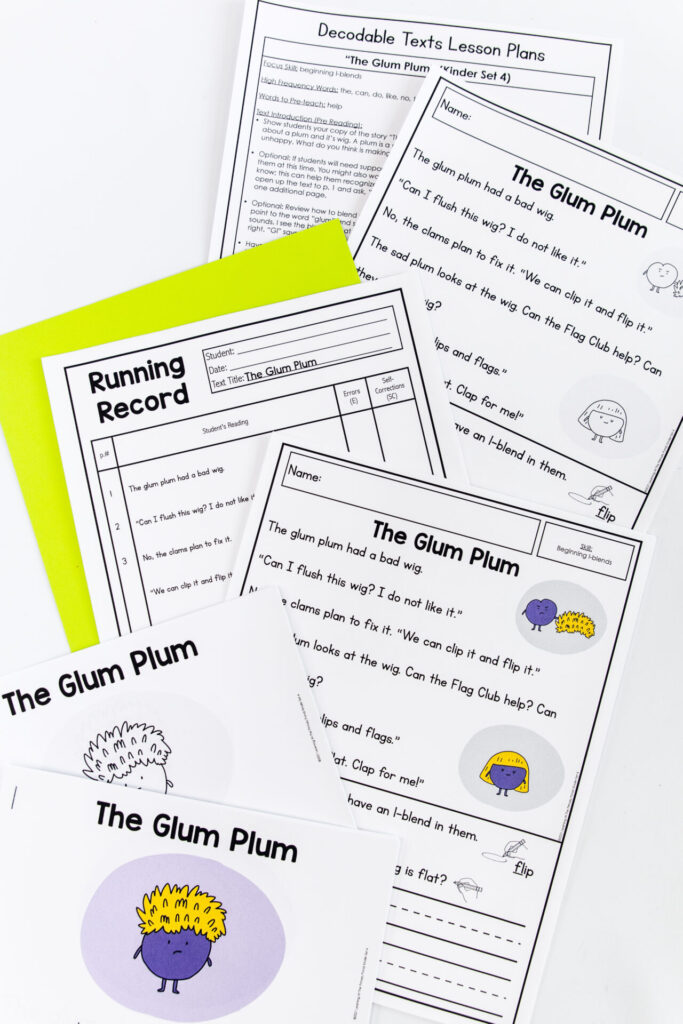
These decodable texts are professionally illustrated and super engaging for kids. You can grab them here!
What Can You Do If Students Are Really Struggling With Consonant Blends?
One thing I should mention is that I never jump straight into working on blends in words (unless I’m working with students who have already had a lot of instruction on blends).
Instead, we begin with phonological awareness/phonemic awareness activities and work with pictures. For more on that, check out “How Your Phonological Awareness Instruction Should Connect To Your Phonics Instruction.”
When I know that we’re going to be studying words with blends soon or when students are struggling with consonant blends, I begin having students blend the sounds in words with blends. For example, I might say: /s/ /p/ /ŏ/ /t/ and students have to say the whole word: spot.
Eventually, students have to segment the distinct sounds in words with blends (for example, I say “crib” and students have to say /k/ /r/ /ĭ/ /b/).
If segmenting words with blends is challenging for your students, try using Elkonin boxes/sound boxes (see image below – it’s literally just 4 small boxes put together for a word with 4 phonemes). These are from my Phonological Awareness Activities.
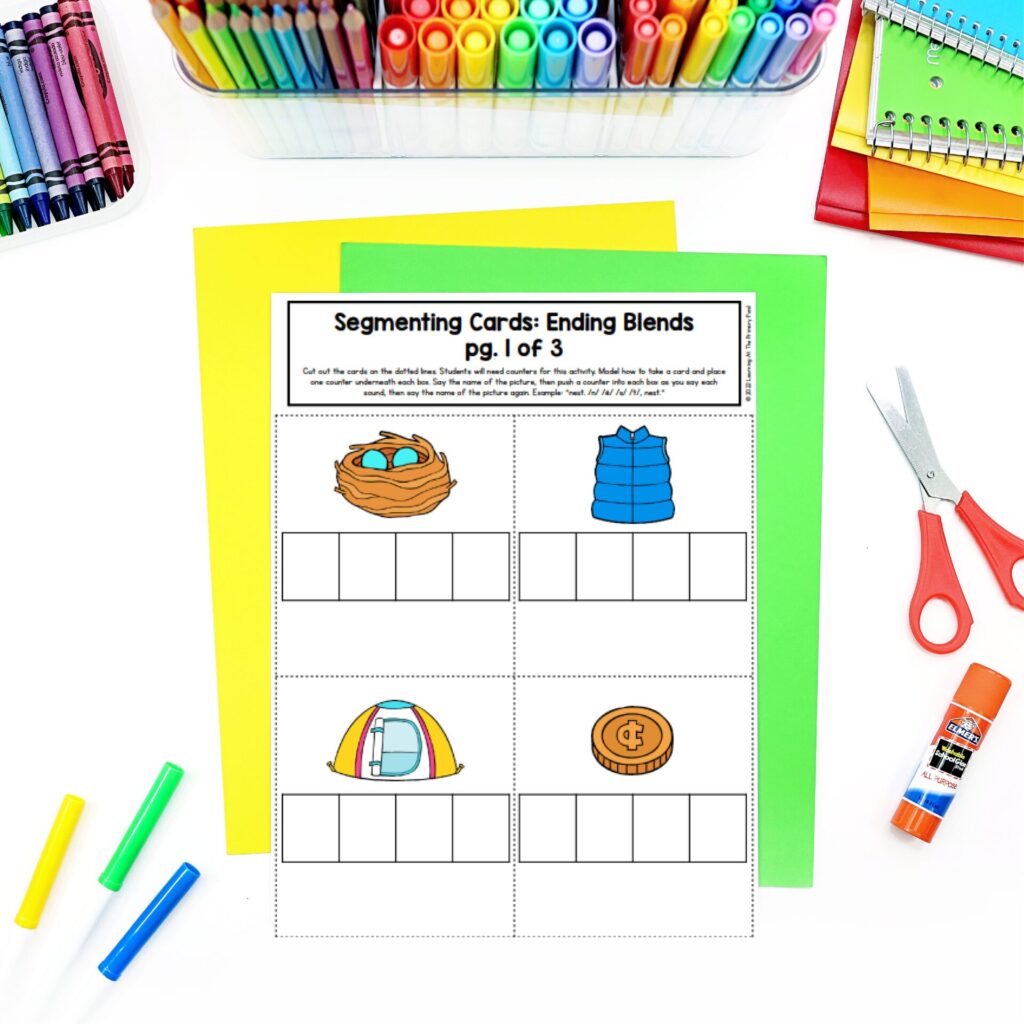
As students say each sound in the word, they touch one box, moving left to right. This is especially helpful for students who tend to omit the second separate sound in a blend when they try the written form – beforehand, they can visually see that they missed something because they have an “extra” box remaining.
Also, it can be helpful to work with pictures/picture cards with blends before introducing actual words/word cards. For example, below you’ll see some more activities from my Phonological Awareness Activities. Students can match initial blends in the first game (i.e. bread and broom). In the second game, one student says the sounds of a word with a blend (i.e. /b/ /l/ /ŏ/ /k/), and their partner says the whole word.
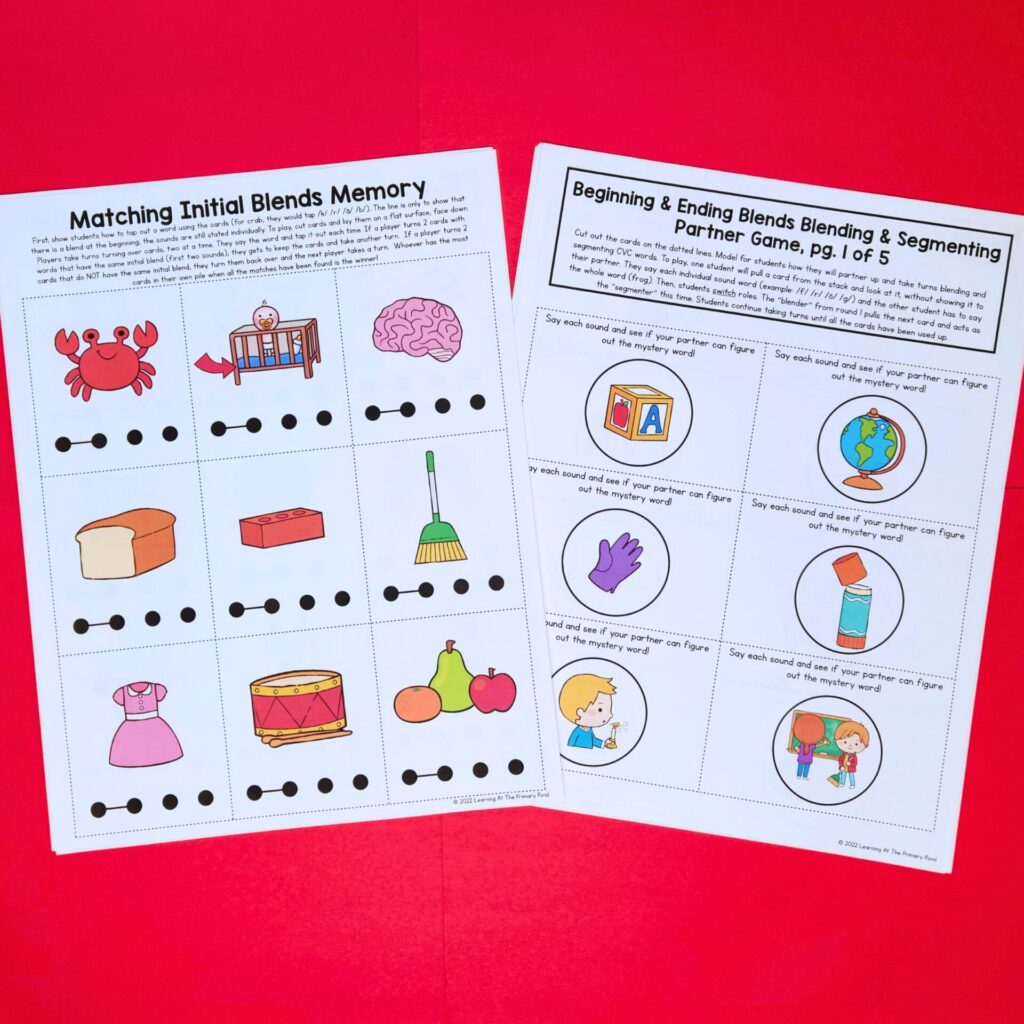
If students are struggling with blends, I just come back to these phonological awareness activities to make sure students are hearing the blends!
Happy teaching!


